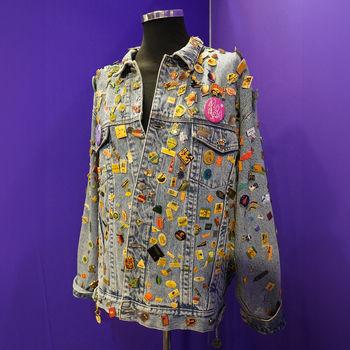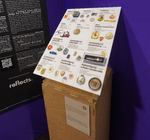
Small masterpieces with a long history
 Button pins are small, easily attached and pinned in various places. They are versatile accessories that serve a variety of purposes, whether in fashion, politics, sports or advertising. Buttons are way of expressing individuality and attracting attention, both of which are essential for communicating important messages.
Button pins are small, easily attached and pinned in various places. They are versatile accessories that serve a variety of purposes, whether in fashion, politics, sports or advertising. Buttons are way of expressing individuality and attracting attention, both of which are essential for communicating important messages.As early as 4000 years BC, people secured their clothing with pins made of bone, wood, stone or thorns. Elaborate, handmade pins have been discovered in ancient burial sites, worn to display one’s status and wealth. These brooches, called robe pins or fibulae, first appeared in the Bronze Age. Originally made of gold and other precious metals, they were of high value. Over time, the robe pin evolvedinto a coat clasp and later an agraffe, often pinned at the neckline of a lady’s garment.
In the Middle Ages, high quality needles were regularly imported into Britain from France. In 1483, Richard III attempted to support British needle makers by banning French imports, but most people ignored the ban. Henry VIII issued quality standards for pins in 1543, proving how important pins were to the Tudors who used them to hold various garments together, such as their famous ruffs. Brooches were so valuable, that they were often listed alongside jewelry in inheritances. Tie pins, the precursors to today's button pins, originated in the early 19th century and evolved from an accessory for ties to a piece of jewelry.
Badges were used as early as 1789 in George Washington's election campaign, but at that time they were sewn on, not pinned, and thus were not like today’s button pins. Until the 19th century, the production of pins was laborious manual work. Mass production did not begin until 1828 in Birmingham with Daniel Foote Taylor's patented pin-making machine, which could produce high-quality pins in large quantities. The breakthrough for buttons began in the United States, where George B. Adams patented in 1896. Throughout history, numerous uses developed and button designs became more diverse. McKinley's1896 campaign was the first time buttons really became popular. There were over 800 different designs created for McKinley alone. One St. Louis congressman gave away 25,000 McKinley buttons. These, it is believed, gave McKinley a big advantage in the election.
In 1972, buttons bearing the slogan "Vote Willy" were created and distributed for the election demonstrating the effectiveness of buttons as an advertising tool. The legendary Smiley was developed in 1963 and made its breakthrough in 1970. Buttons with the message "Nuclear power? No Thanks" and a peace symbol were developed and distributed by the anti-nuclear movement in the 1970s.
The use of buttons has spread from political campaigns to the wider field of commercial and marketing activity. Buttons now serve as inexpensive advertising platforms and allow companies to display their logos and slogans. They are also used to show club affiliations, in sports, music and special events. Pins are also a popular accessory in traditional folk costumes. Companies such as Kellogg's use buttons as promotional items and as collectibles.






